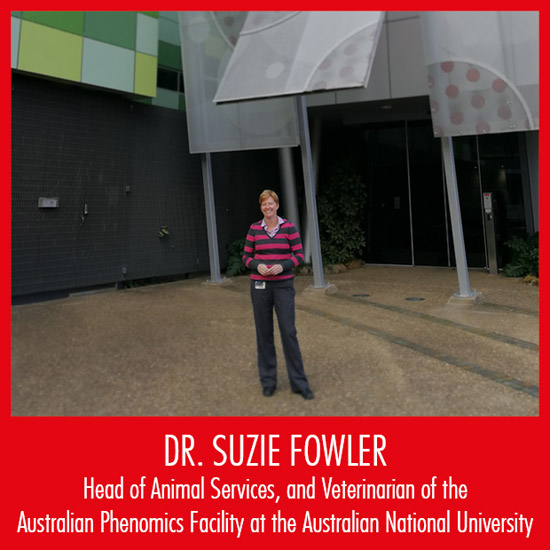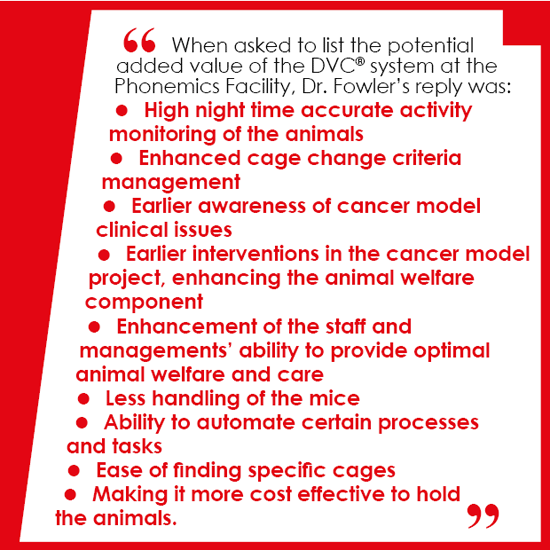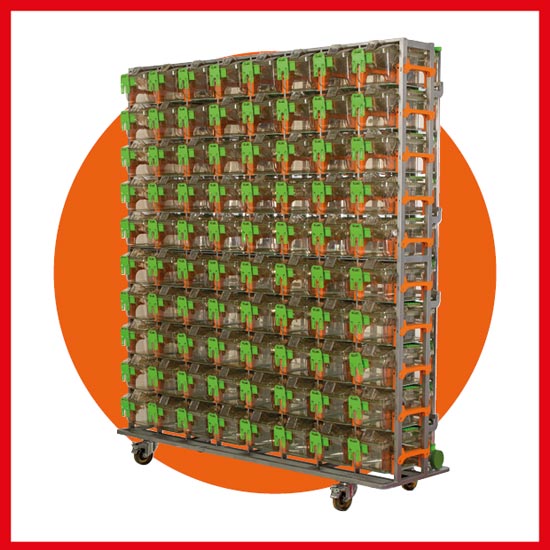
The current version of the Tecniplast website doesn't match your region. Please visit your local website to find information and offerings specific to your country.

The current version of the Tecniplast website doesn't match your region. Please visit your local website to find information and offerings specific to your country.

Head of Animal Services, and Veterinarian of the Australian Phenomics Facility at the Australian National University

Dr Suzie Fowler is the host of the 2019 ANZLAA Animal Welfare Symposium and we are interviewing her today concerning the Symposium, as well as, learning about the Phenomics Facility and what she envisions as future plans at the facility.
She was interviewed by Dr John J Hasenau for Panorama. The ANZLAA Welfare Symposium is an annual event that allows a small group of participants to attend and discuss very relevant welfare topics for the Australian Lab Animal Community. Dr Fowler was asked what makes this symposium successful? She indicated that the diversity of people and the job positions that they hold that attend the meeting makes it a very interesting meeting. It allows for good networking and the program has pertinent timely subjects that attendees have a good interest in. Attendees of the 2018 meeting from her institution were very excited and shared all they learned when they returned. They especially enjoyed the blending of tours, lectures and participation groups. I asked Dr Fowler her expectations in preparing for this year’s meeting and also her recommendations for readers planning to participate in future ANZLAA Animal Welfare Symposiums? Dr Fowler indicated that having pertinent timely topics has great value and meaning for the attendees, and that when sending staff send Key junior staff to help them develop and learn.
Making it accessible to mid-level technicians allows them to have a great experience of comparing what their institution does to other institutions, build a networking network and shows them you’re interested in their development. The attendees sharing their new knowledge allowing others at the home institution to gain benefits speaks for itself as to the Symposiums' success. The Phenomics Facility is a full service, large facility with ~12K cages, and 50 staff members. There is an overriding interest in developing the staff and there are at least two paths for them in development. A path for technical development encouraging staff to participate in rederivation or cryopreservation techniques while still doing their husbandry tasks, or a path for management.
 Goals of Dr Fowler for the Phonemics Facility include: more automation to make things simpler for the staff while maintaining health and safety for both animals and staff yet being cost efficient for the researchers.
Goals of Dr Fowler for the Phonemics Facility include: more automation to make things simpler for the staff while maintaining health and safety for both animals and staff yet being cost efficient for the researchers.
By increasing automation and augmenting what the staff is responsible for (cage checks) this then enhances the animal welfare component while giving the staff more time for other opportunities.
Technology has been changing our industry. Dr Fowler recently purchased two new racks with the DVC® technology. When asked what the primary drivers were for her decision to buy these specific racks and her expected results her response included: The continued maintenance and enhancement of the animal welfare component at the Phenomics facility. Specifically the ability to monitor the higher night time activity was the major driver in addition to the decreased cage changing component to assure better standardization of cage criteria.
When asked to list the potential added value of the DVC® system at the Phonemics Facility the reply was:
Dr Fowler was asked which research applications will have a major impact with the new DVC® technology? The cancer oncology research programs, with earlier awareness and ability to intervene in timely fashion will be one area. The neurobiology research program with animal models of neurodegeneration (Multiple Sclerosis, Parkinson’s and Alzheimer’s as examples) should also equally benefit through its use.
 My last question to Dr Fowler was about where she sees the DVC® 10 years from now?
My last question to Dr Fowler was about where she sees the DVC® 10 years from now?
Dr Fowler was interested in seeing increased automation and ease of cage management, but the primary emphasis has been the 3Rs across all areas of the operation. She is seeing where the DVC® will be an intrical component in this system providing earliest possible strain/model specific alerts to the staff and optimal cage management and data management.
The Internet of the Vivarium and the possibility of having smart buildings incorporating DVC® technology was discussed in this context.
John Hasenau - Principal, Lab Animal Consultants